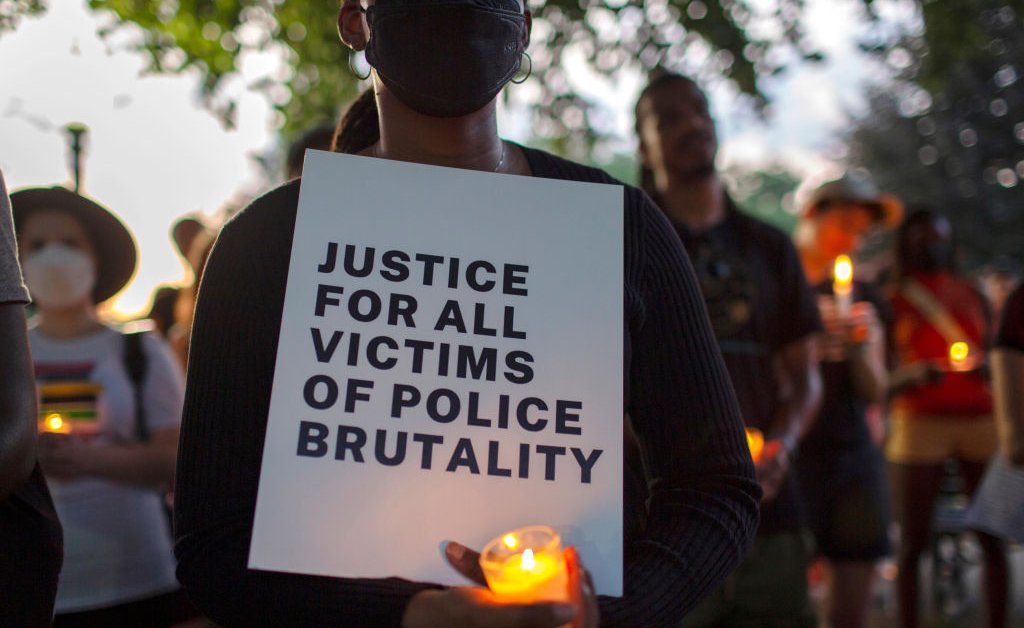In the past 10 years, headlines have been dominated by incidents of police violence, from the tragic killing of Michael Brown, George Floyd, Breonna Taylor, and most recently Sonya Massey to the numerous protests that followed. These events have sparked a national conversation about the role and history of policing in the United States. The history of policing in the U.S. is neither linear nor monolithic. Instead, it is fragmented and developed differently in various regions. But one aspect of its history stands out clearly: U.S. policing wasn’t constructed out of a desire for public safety but out of a desire to preserve power and the status quo.
From its inception, policing in the U.S. has been a colonial project, with international dimensions that connect directly to imperialism. Early colonial formations of policing included slave patrols in the South and watchmen policing groups in the North. Slave patrols emerged in the early 1700s, designed to enforce slavery and prevent enslaved people from rebelling or escaping. These patrols were authorized to use violence and terror to control Black populations. In the North, early watch systems began in the 1600s, focusing on protecting property and maintaining public order, which often meant safeguarding the interests of the wealthy and powerful. The Texas Rangers, established in 1835, represent another early form of policing aimed at maintaining the interests of settlers and suppressing Indigenous populations.
The rise of industrial capitalism in the 19th century brought about new forms of policing, including the use of police to break strikes and suppress labor organizing. The first major city police department was established in Boston in 1838, followed by New York City in 1845, and Chicago in 1851. These early police forces were employed to protect capital and maintain the status quo during periods of labor unrest, illustrating how policing has long been a tool of economic control. This trend continued into the 20th century, with police frequently called upon to quell protests and labor strikes, using violence and intimidation to suppress worker demands for better conditions and wages.
Resistance to police violence and legitimacy crises have played significant roles in shaping the history of policing. And historically, the response to dissent against policing has been to strengthen policing and embed it more deeply into the social fabric of everyday life.
Read More: The Tyre Nichols Videos Demand Solemnity, Not Sensationalism
Governments, media, and mainstream social institutions have socialized us to believe that police are the only organizations that can effectively provide public safety. This belief justifies the idea that police need to maintain a monopoly on the legitimate use of violence. For most of modern history, though, police weren’t seen this way. Instead, they were viewed as a violent occupying force serving the interests of those in power. For the communities targeted by police violence, the idea that police weren’t created in the interest of safety isn’t surprising. Police are said to be the stewards of public safety, but across the country, policing emerged in the 17th century as a tool of racial and class domination and control. The professionalization era of police, which began in the early 1900s and sought to address widespread corruption and the problems of policing, transformed policing practices but did not address the problems of policing: police power itself. The police violence we see today is not a fluke or aberration. The criminal-legal system today is not broken; it is operating exactly as it was designed to: as a violent tool of race and class control that protects very few.
The mid-1900s saw significant investments and efforts by politicians and police leaders that set history on a course where policing would swell in ways that few could have predicted. President Lyndon B. Johnson’s war on crime reinforced the public perception that local law enforcement was the only legitimate guardian of public safety. The 1965 Law Enforcement Assistance Act (LEAA) created a federal funding stream that expanded local law enforcement’s capacity to acquire military-grade gear and hire more officers. Over the years, billions of dollars have been funneled into local law enforcement, allowing police to acquire more technology and equipment for biased crime control and protest suppression efforts. Despite differences in policing models, the use of policing to control and punish marginalized communities has remained constant.
Internationally, U.S. policing methods have been exported to support colonial and imperial efforts seeking to expand empire. For example, during the Cold War, the U.S. trained police forces in allied countries to suppress Communist movements and maintain control over colonized populations. This exchange of tactics between imperial armies and police forces highlights the interconnectedness of domestic and international strategies of control. The use of counterinsurgency techniques, developed by military forces to manage colonized populations, became a staple in American policing, particularly in managing protests and civil unrest.
Today, police and prison spending consume hundreds of billions of dollars that could be spent developing community infrastructures and nonpunitive alternatives to prisons and policing. The criminal-legal system, with its origins in racial and class control, has evolved to maintain the same functions under the guise of public safety. The police violence we witness today is not an anomaly but a continuation of a historical pattern designed to preserve power and control over marginalized communities.
In the 1960s, as political resistance grew, policing expanded. The violence of policing was widespread, and police used brutal tactics to suppress protests and maintain racial segregation and discrimination. During the civil rights movement, police violence was brought into the national spotlight, shocking the conscience of the nation and galvanizing support for the civil rights cause. Police employed attack dogs, high-pressure water cannons, and tear gas against protestors. These tactics were part of a larger strategy to repress activism and maintain racial segregation and discrimination. Police also enforced racial boundaries at parks, schools, modes of transportation, pools, and entire communities.
As policing expanded, law enforcement was given a large degree of latitude, enabling the mass arrest and incarceration of Black and increasingly Latinx people, a legacy that continues today. The professionalization era of policing that began in the early 20th century and the federal embalming of the 1960s with President Johnson’s war on crime began shifting perceptions. This period marked the beginning of rebranding efforts—which some have coined police propaganda, or “copaganda”—that have positioned the police as crime stoppers and the stewards of public safety. These efforts, supported by federal funds, facilitated a rebranding of police from enforcers of marginalization and political control to perceived protectors of public safety. The promises of police to expand the category deemed worthy of protection and the idea that police are capable of reform further shifted perceptions. This expansion of policing and rebranding efforts in all areas of society led to the shift in public perception, portraying police as essential crime stoppers rather than instruments of social control.
Despite promises of reform, policing continues to focus on reinforcing power structures. These power structures center largely on capital and profit accrual, which have a history of organizing themselves along racial lines. Understanding the origins and evolution of policing in the United States reveals its true purpose: maintaining social control and protecting the interests of the powerful.
We must reimagine public safety in ways that do not rely on coercion and violence but instead focus on community-based solutions that address the root causes of harm and inequality. The rebranding efforts that have positioned the police as crime stoppers and stewards of public safety, alongside their historical and contemporary roles, underscore the need for a fundamental rethinking of public safety beyond policing.
Excerpted from the book BEYOND POLICING by Philip V. McHarris. Copyright © 2024 by Philip V. McHarris. Reprinted with permission of Legacy Lit. All rights reserved.




